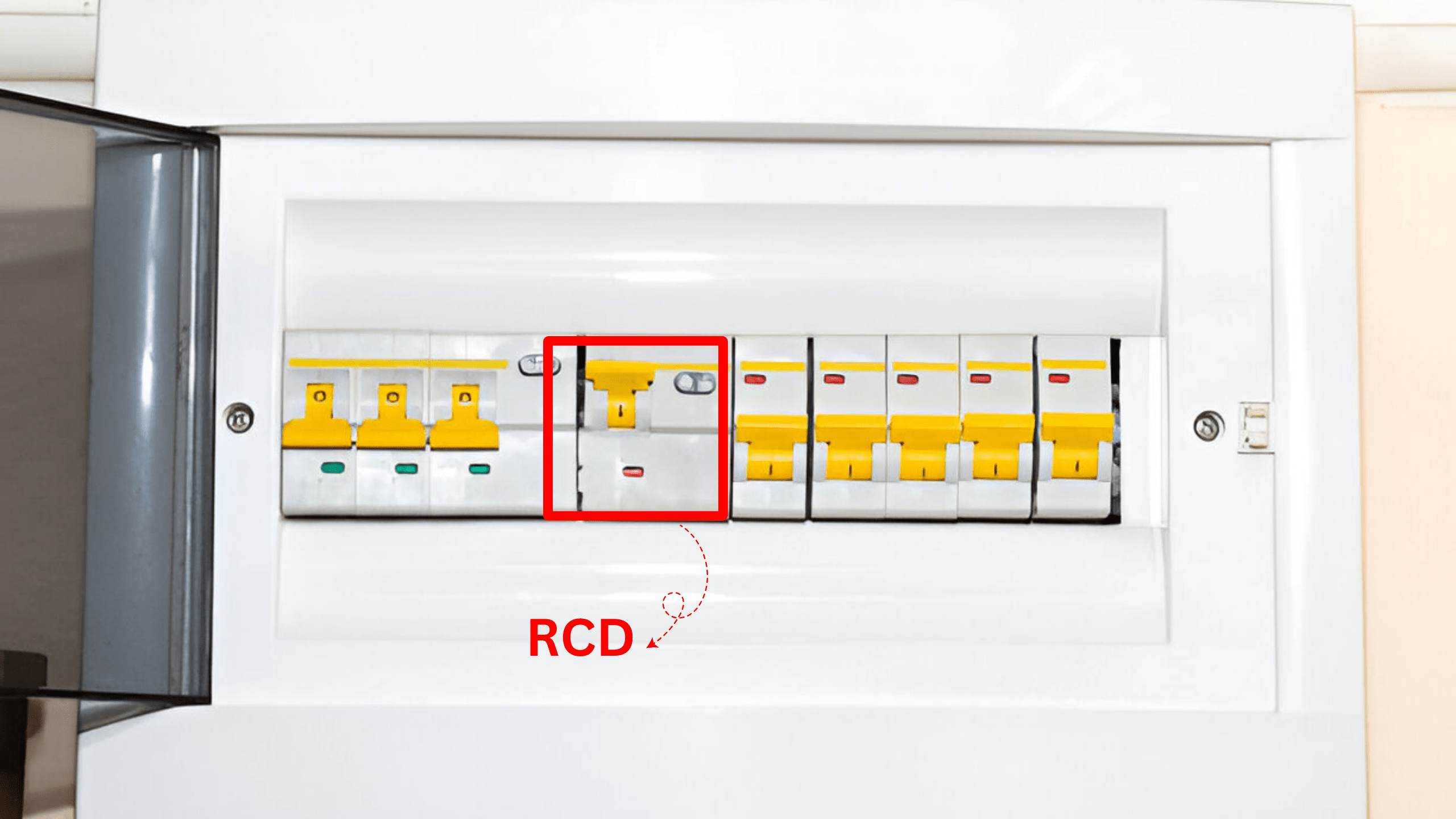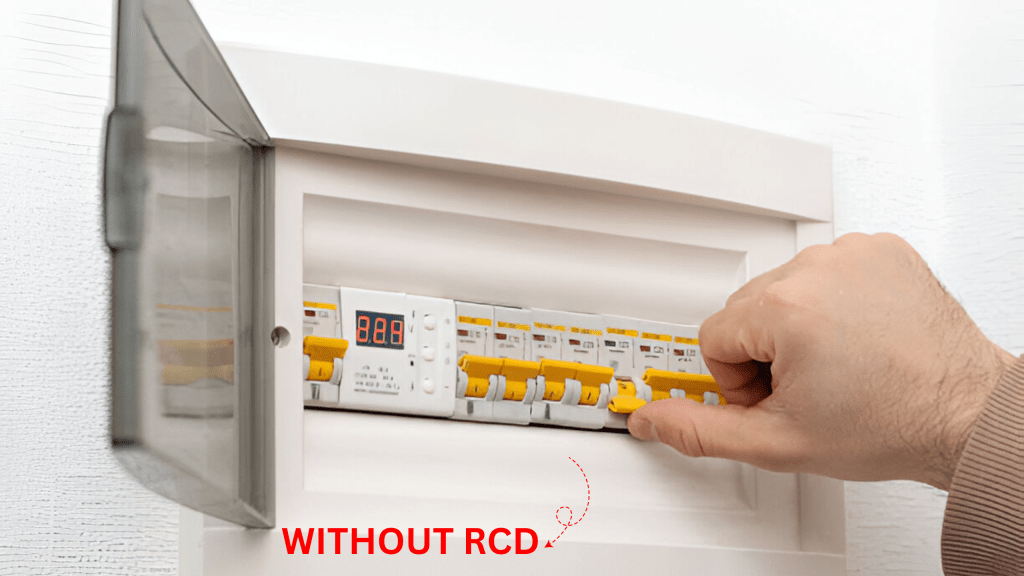In the field of electrical safety, the question of whether the absence of a Residual Current Device (RCD) results in a failure on an Electrical Installation Condition Report (EICR) is both relevant and multifaceted. An RCD plays a crucial role by swiftly disconnecting electrical power in the event of a fault, thereby preventing electric shocks or fire hazards. However, determining the impact of not having an RCD requires a deep understanding of current regulations and the unique conditions of the electrical installation. As we delve into this topic, it’s essential to consider not only the immediate compliance requirements but also the wider implications for property safety and legal liability. Let’s understand Is No RCD a Fail on Eicr?
What is an RCD and Its Role in Electrical Safety?
A Residual Current Device (RCD) is a critical safety mechanism in modern electrical systems, designed to instantly break an electrical circuit to prevent serious harm from an ongoing electric shock.
There are multiple RCD types, including fixed, socket, and portable RCDs, each tailored to specific applications and environments. For optimal effectiveness, the selection and installation of an RCD must align with the existing electrical infrastructure and adhere to stringent RCD regulations.

These regulations specify the necessary parameters and standards for installation, ensuring that the RCDs provide the intended protection against electrical faults.
RCD installation should be performed by certified professionals who can assess the electrical system’s characteristics and install the RCD in a manner that maximizes safety and compliance with local and international standards.
Following installation, RCD testing is imperative; it involves routine checks to verify that the RCD responds appropriately to fault conditions. This testing should be part of a regular maintenance schedule to ensure long-term reliability and functionality.
Moreover, RCD maintenance is crucial to address any wear and tear or environmental factors that might impact the device’s operation.
Regular reviews of RCD performance and compliance with evolving regulations are necessary to uphold safety standards in dynamic electrical environments.
Why RCDs Are Necessary in Modern Electrical Installations
Building on the understanding of Residual Current Devices (RCDs) and their role in enhancing electrical safety, it becomes evident why these devices are indispensable in modern electrical installations.
RCDs are critical for the protection they offer against electrical faults, significantly reducing the risk of electric shock and fire hazards. Their importance is not only rooted in safety but also in compliance with modern electrical standards and regulations.
Here are several key aspects that underline the necessity of RCDs:
- Enhanced Safety: RCDs instantly break the circuit when they detect an imbalance between the incoming and outgoing current, thereby preventing potential electrocution and fire.
- RCD Types and Versatility: Various types of RCDs, including fixed, socket-outlet, and portable RCDs, cater to different needs and applications, enhancing adaptability in diverse installation environments.
- Compliance with Standards: Installing RCDs is often mandated by national electrical codes, which underscore the need for RCD compliance to meet legal and safety requirements.
- Effective Testing and Maintenance: Regular RCD testing ensures functionality and reliability. This practice is crucial for maintaining the protective characteristics of the installation over time.
Incorporating RCDs is not merely about meeting regulatory demands but fundamentally about safeguarding lives and property.
Proper RCD installation and diligent RCD testing are essential steps in achieving these goals.
Does the Absence of an RCD Result in an EICR Failure?
Given the critical role of Residual Current Devices (RCDs) in ensuring electrical safety, their absence can indeed lead to a failure in an Electrical Installation Condition Report (EICR). RCDs are pivotal as they significantly reduce the risk of shock and fire by instantly cutting off electrical power when leakage current is detected. This safety mechanism aligns with both national safety standards and rigorous electrical regulations.
The presence of RCDs is a fundamental criterion under the latest Installation requirements. An EICR assesses installations primarily for compliance and safety. Without RCDs, especially in circuits that could potentially expose users to water (like in kitchens and bathrooms), the installation fails to meet prescribed Safety standards, which is a critical EICR implication.
To understand how the absence of RCDs impacts the EICR, consider the following table:
| Aspect Considered | Impact Without RCD |
|---|---|
| Safety Compliance | Non-compliant |
| Risk Assessment | High risk |
| User Protection | Inadequately protected |
| Regulation Adherence | Non-adherent |
| Potential for Circuit Approval | Unlikely |
Common Scenarios Where No RCD May Be Found
In older properties and installations predating modern electrical regulations, it is common to encounter the absence of Residual Current Devices (RCDs). This situation frequently arises due to the chronological development of safety standards and the varying pace of electrical upgrades in different regions.

Understanding where RCDs might be missing involves recognizing typical scenarios influenced by historical installations and the evolution of safety regulations.
- Historical Residential Buildings: Many residential buildings constructed before the 1990s may not have RCDs, especially if no major electrical upgrades have been undertaken. These properties were built under old regulations that did not mandate RCD protection.
- Commercial Facilities: Older commercial setups, particularly small businesses in buildings with legacy electrical systems, often lack updated circuit protection due to minimized modifications over the years.
- Industrial Sites: Heavy industrial sites with long-standing electrical installations might not have RCDs in older sections of the facility, where the original electrical design did not include such devices under past safety codes.
- Rural and Remote Locations: Homes and facilities in remote or rural areas frequently have outdated electrical systems, with upgrades and risk assessments not conducted as rigorously as in urban settings.
For professionals conducting EICRs, recognizing these scenarios enhances risk assessment accuracy and informs necessary electrical upgrades, thereby improving homeowner awareness and safety.
What to Do if Your EICR Highlights No RCD Protection
Discovering that your Electrical Installation Condition Report (EICR) indicates a lack of Residual Current Device (RCD) protection can be a cause for concern, especially in terms of safety and compliance with current electrical standards.
The absence of RCDs exposes occupants to potential electrical shock risks and may contravene safety regulations, necessitating immediate remedial actions.
Firstly, assess the feasibility of integrating RCDs into your existing electrical system. Consult with a certified electrician who can evaluate the technical specifics and advise on the most suitable type of RCD for your installation, considering factors like type AC, A, F, or B, depending on the nature of the connected loads and potential electrical faults.
If RCD installation is impractical due to system constraints, explore RCD alternatives such as RCBOs (Residual Current Circuit Breaker with Overcurrent protection) that provide both short-circuit and earth fault protection. This dual functionality may enhance safety without extensive electrical upgrades.
Additionally, update your property assessments to reflect this change, as the absence of RCD protection can affect property value and insurance implications.
Ensure that all modifications comply with the latest electrical safety regulations to maintain safety standards and insurance validity.
Conclusion
In conclusion, the omission of a Residual Current Device (RCD) in electrical systems is a critical safety oversight, often resulting in a fail on an Electrical Installation Condition Report (EICR). Given the paramount role of RCDs in safeguarding against electric shocks and fire hazards, the absence of such protective measures not only contravenes current safety regulations but also exposes occupants to significant risks. Corrective measures must be promptly implemented to align with established electrical safety standards.









